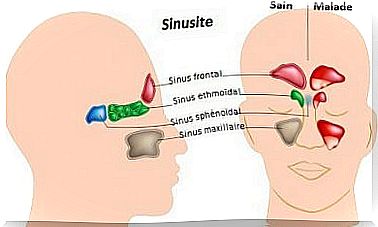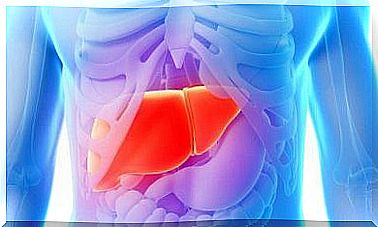Flu Or Cold? The Main Differences
Although these 2 conditions are often considered to be similar, the flu and the common cold are actually quite different. These conditions have different viruses and diagnoses and the treatment prescribed by the doctor will not be the same either.

When this discomfort that affects the respiratory tract appears, it is essential to ask the following question: is it a flu or a cold snap? These 2 conditions both come from a virus, that is, they are easily caught from one person to another.
You will discover in this article the peculiarities of these common ailments, we strongly advise you to continue reading!
The causes of flu and colds
The common cold, or simple cold, can be caused by 200 different types of viruses; the viruses that cause influenza are known as “influenza A”. In order to shed light on these different viruses, the WHO has been able to identify some of the most important in seasonal influenza.
These viruses can be transmitted relatively easily because they are present in the atmosphere. They can for example remain present on a surface for 24 hours. Likewise, infected people can pass the virus on to others through coughing, saliva, or sneezing.
The vaccines currently on the market are prescribed for influenza A and B. Indeed, they are the most virulent. Vaccination is recommended among people at risk once a year, before winter: these people said to be at risk are the elderly, pregnant women, sick people or those working in the health or education sector.
The other differences
The common cold causes discomfort in the nose and throat. While the flu can affect the respiratory tract, but also cause discomfort that is felt throughout the body.

Regarding the climate, it should be noted that the common cold can be caught in any season (although it is not very common to catch them in the summer). While the flu is subject to the seasons, it spreads much more in the winter.
Flu or cold? The different symptoms
The most common cold symptoms are: stuffy nose, difficulty breathing, sneezing and coughing. Sometimes the throat may also be sore, or the body temperature may be a little high (up to 37.5 ºC, which is not considered a fever).
Symptoms of the flu include a stuffy nose (but not significantly), pharyngeal pain, and cough. Added to this is a great feeling of fatigue, muscle pain, headaches and of course the onset of fever, ie the body temperature exceeds 38.5 ºC.
This symptomatology mainly marks a difference in terms of severity. We see that the flu exhausts patients much more than the common cold. However, the 2 diseases can cause very serious complications for the health or the life of the patients.
Treatment adapted to each infection
Knowing that the 2 infections are due to a virus, their treatment is symptomatic, that is to say, it only seeks to relieve the symptoms of the disease. The disease has a predetermined cycle of days, which is longer in the case of influenza than in that of the common cold, and this period is incompressible.
- This is not a contamination by bacteria, it is therefore useless to take antibiotics, except in the case of complications and only on prescription of the doctor.
- Self-medication is strongly discouraged as a preventive measure for this type of pathologies. Only the medical profession has the professional qualification necessary to treat these diseases.
- Treatment includes decongestants, cough suppressants, anti-allergic, antihistamines, expectorants, mucolytics, analgesics and anti-flu, as appropriate.
Diagnosis and incubation
Patients very often wonder about the duration of these diseases. Below we give you some information to remember:
- Usually, it is enough for the doctor to describe a few symptoms to him so that he can make his diagnosis. According to the latter, he may request additional analyzes, blood or secretions
- We recover very quickly from a simple cold snap: it lasts up to 5 days from the onset of the first symptoms, it should also be noted that these appear gradually.
- Flu symptoms worsen rapidly: this illness lasts between 7 and 15 days, although there is a wide variety of types of cases.
- If you ever contract one of these 2 diseases and it lasts longer than expected, we advise you to consult a doctor as soon as possible in order to avoid any serious complications.
Possible complications
If the cold or the flu lasts longer than the pathology should, it is important to consult: among the complications that may appear, we find otitis, bronchitis, pneumonia and sinusitis.
These diseases are all part of a different clinical case, both in terms of their approach and their treatment. They can be associated with bacterial infections.
Flu or cold: home care
Without losing sight of course that only a doctor can prescribe the appropriate treatment, some homemade solutions can help to support the disease. At the height of the flu or cold, it is important to:
- Rest: the body uses a lot of energy to fight the disease within it, which is why it needs rest to regenerate
- Drink plenty of water to help thin the mucous membranes and relieve congestion in the airways
- Putting an air humidifier at home: it is known that dry air promotes the proliferation of bacteria in the respiratory tract
When it comes to personal hygiene, whether it is a flu or a cold, it is highly recommended that you wash your hands frequently to minimize contagion. It is important to maintain good hygiene in general.










